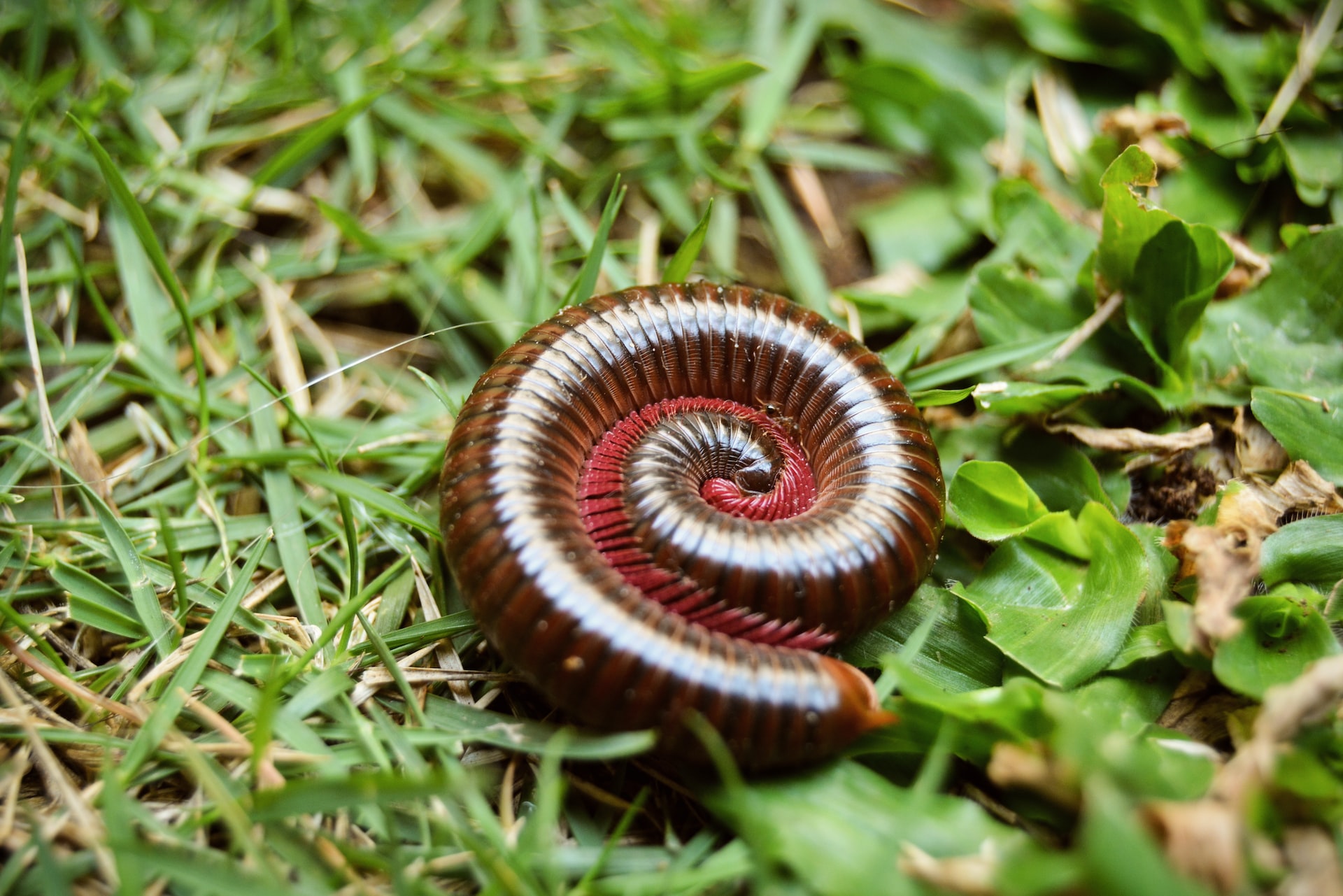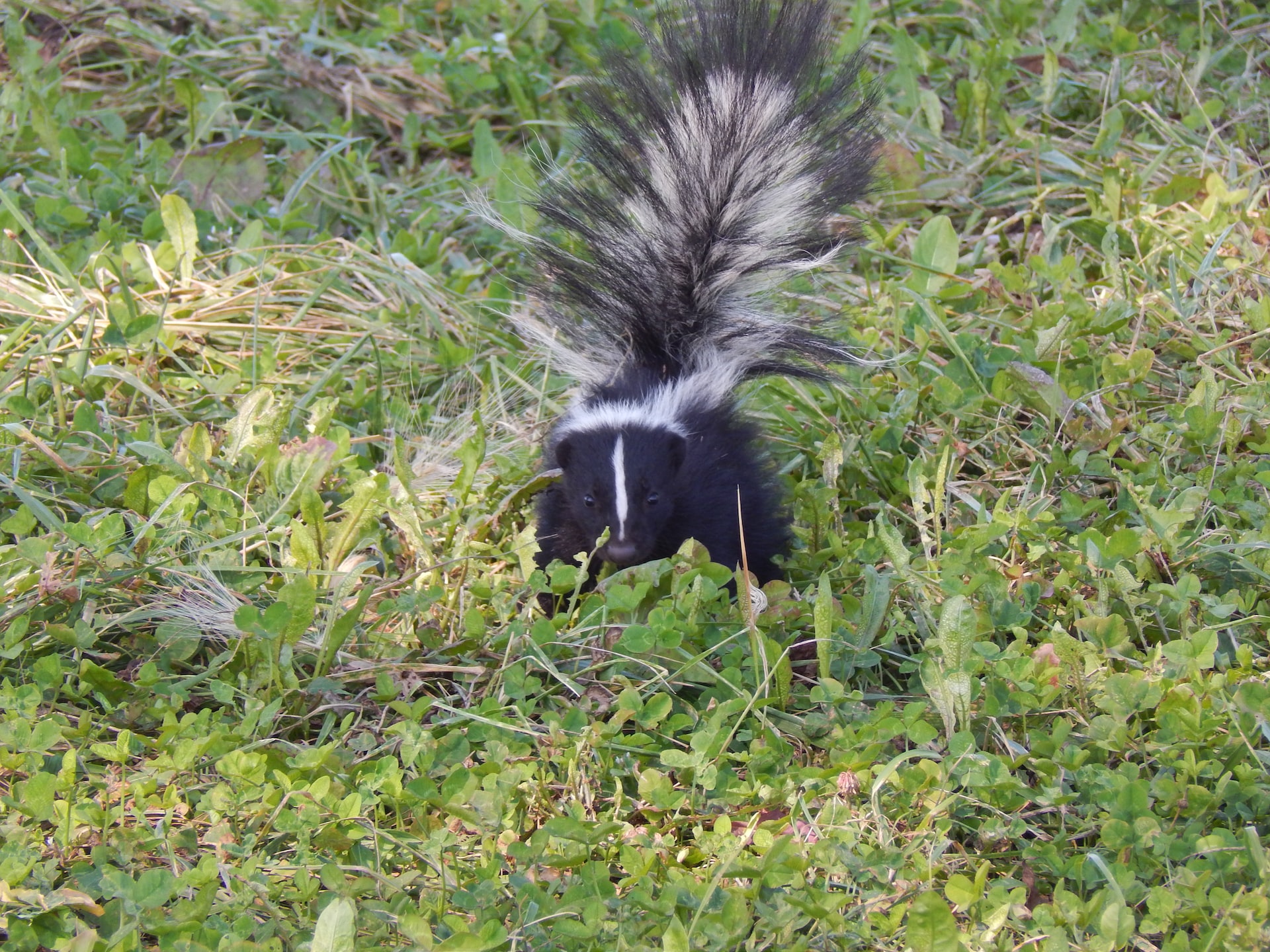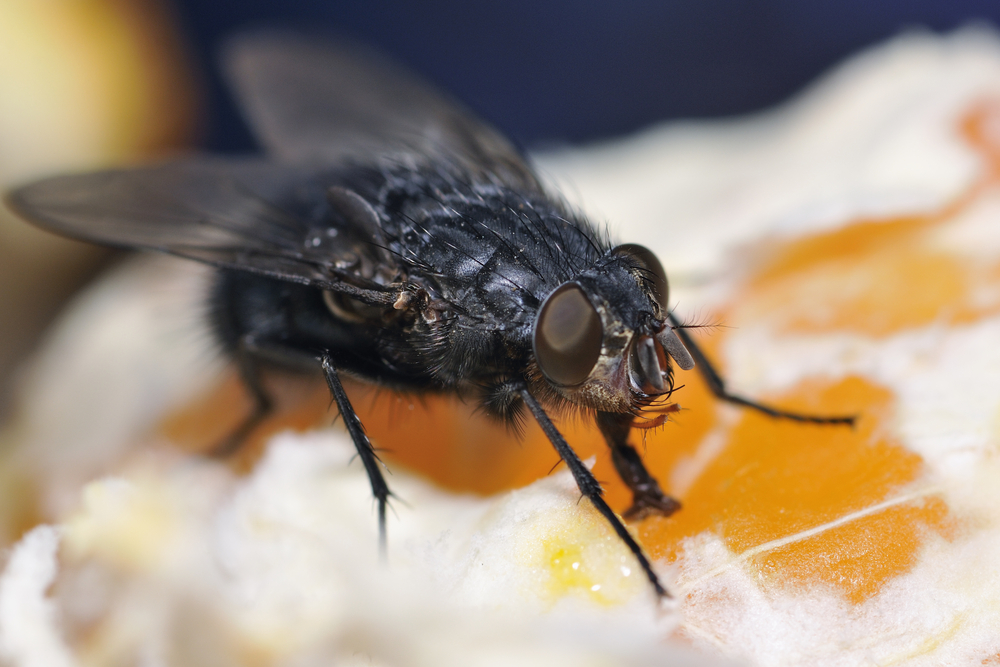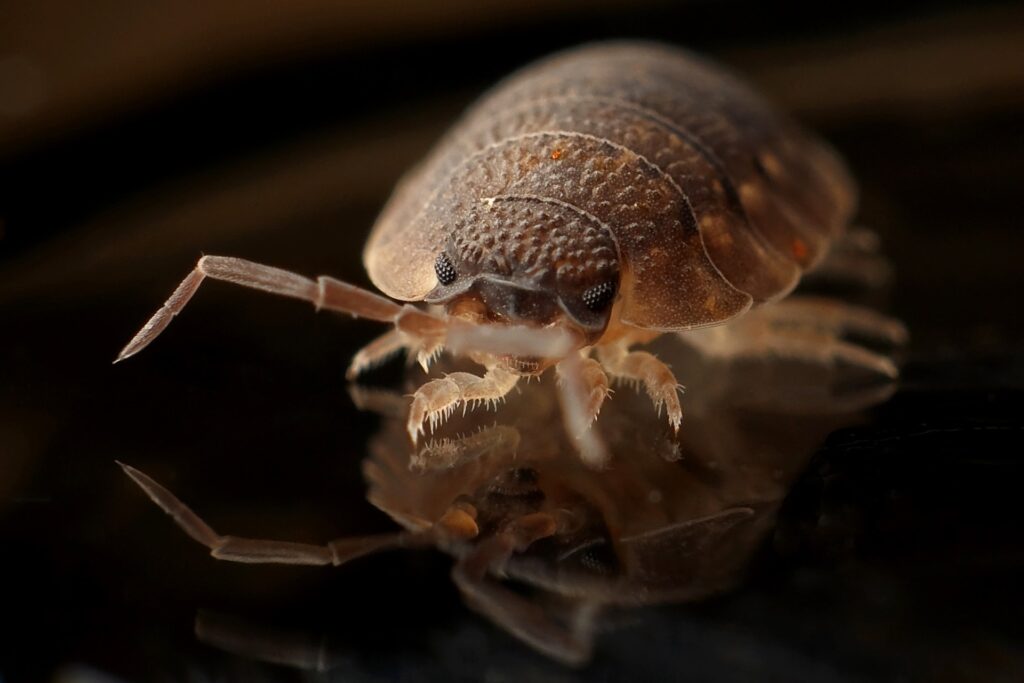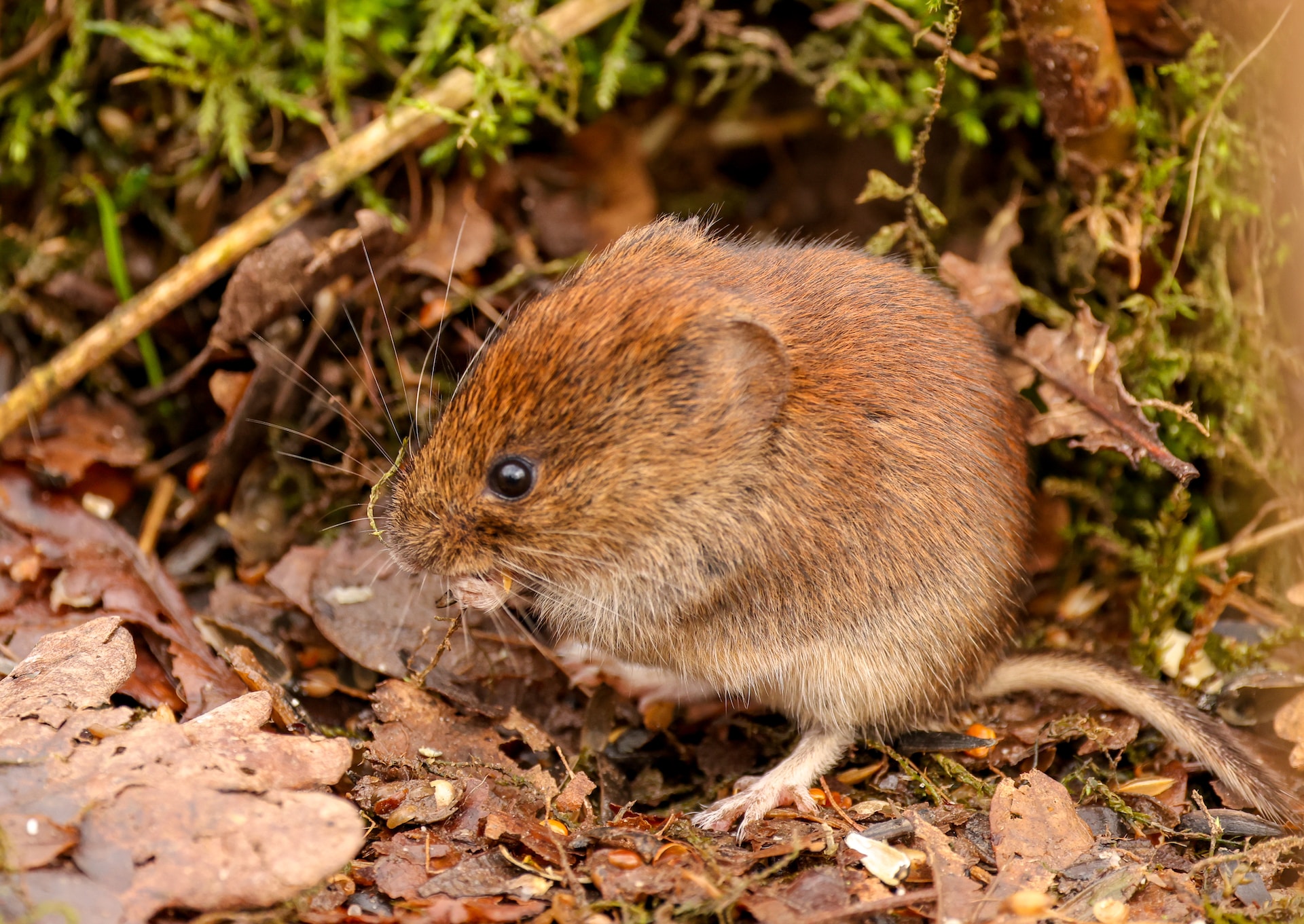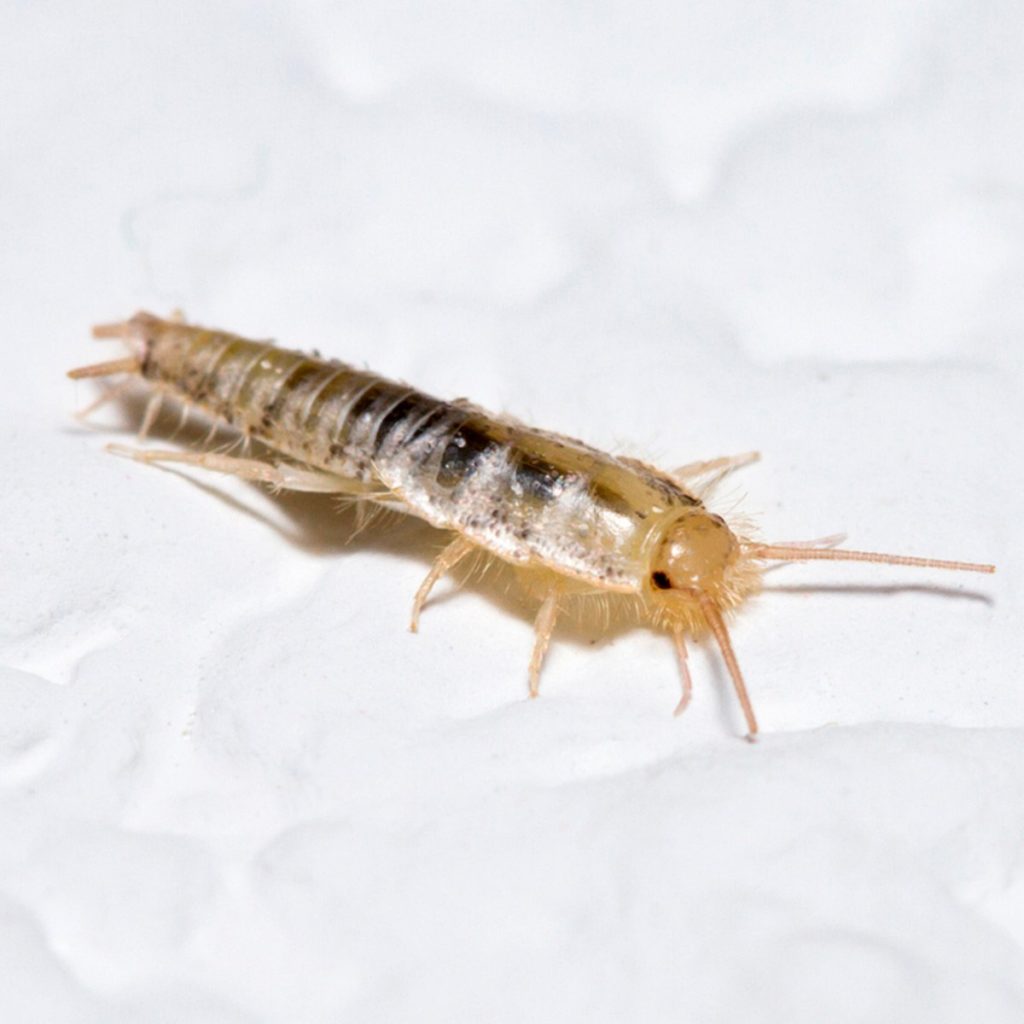Pest Control Tips to Prepare for the Cold Pennsylvania Winter
Winter in Pennsylvania can be brutally cold. You would think the cold would kill off pests or send them into hibernation, and it does to some degree — but since your home remains warm and cozy throughout the winter, pests are still a threat.
The time to start preparing for winter is now. Here are some pest control tips you can implement this fall and into the winter season to protect your home from the creepy crawlies.
1. Store Your Firewood Carefully
As temperatures grow colder, you probably can't wait to light some fires in your fireplace. Just make sure the way you store your firewood is not an open invitation to pests.
Keep your main firewood pile at least 20 feet from your home so that any rodents that seek refuge in the wood during winter don't have easy access to your home. Make your wood pile less appealing to these pests by storing the wood on concrete blocks or bricks.
Also use caution when bringing firewood inside. Inspect each piece for insects, and burn wood immediately after bringing it indoors.
2. Vacuum More Often
As the temperatures grow colder, the air also grows drier. As such, your home may become dustier. Hidden in and among the dust in your home may be insect eggs. If you vacuum more often and are careful to empty the vacuum bag outside after vacuuming, you'll reduce your risk of an insect problem during the cooler months.
Vacuuming also removes crumbs and food debris from floors and carpet so any insects that do find their way inside don't have a food source.
3. Cover Attic Vents and Chimneys
The attic is warm, quiet, and secluded, which makes it a common harborage point for pests, from squirrels to rats. Make sure your attic is sealed up prior to winter so these pests do not enter in search of a warm and sheltered space.
Pests often enter attics through roofing vents and chimneys. If your chimney does not already have a chimney cap, have one installed. Made from metal mesh, a chimney cap will keep pests out while still letting smoke escape. You can also place wire vent covers over your roofing vents; they are readily available at most hardware stores and easy to install.
4. Rake Your Leaves
As tempting as it might be to just let those fallen leaves sit until spring, this is a surefire way to attract pests. If there are wet leaves piled up against your home's foundation, insects will hide out there and then find their way into your home when outside temperatures drop.
Millipedes and centipedes, in particular, love to hide out in leaves and may show up in your basement if you have wet leaves piled against your foundation.
5. Have Your Roof Checked for Leaks
Roof leaks are unfortunately common during the snowy Pennsylvania winter. Snow builds up on the roof, and as it melts, finds its way in past damaged shingles or popped nails. A moist attic space is more appealing to an array of pests, from carpenter ants to mice.
If your roof is more than a couple of years old, have it looked over by a roofing company this fall. They can repair any damaged areas to prevent leaks and subsequent pest infestations. Also keep your gutters clear — clogged gutters can lead to a leaky roof, and pests may take up residence directly in the gutters too.
While the cold weather does offer some reprieve from pests, you must still keep up with preventative tactics throughout autumn and winter. If you are having trouble with pests in your home or yard this fall, contact Environmental Services Pest Control, LLC, to schedule an appointment.
The 411 on Centipedes and Millipedes
Even though centipedes and millipedes are not necessarily hazardous to your home, they can bite if handled. In addition, these pests are quite unattractive and often frightening. With this guide and your pest professional's help , you will be able to understand and treat a centipedes or millipede problem in your home.
Centipedes Versus Millipedes
One of the most important facts you should know about centipedes and millipedes is that they are not actually insects. Most experts believe they are more closely related to lobsters or shrimp , even though centipedes and millipedes live on land.
Knowing the differences between centipedes and millipedes will help you determine which one is a problem in your house. Both may appear similar, but they are actually quite different.
Centipedes have 100 legs while millipedes have 1000 legs, which is their most distinct difference. However, you most likely will not be counting their legs to distinguish which of these pests is in your home.
Centipedes have a flat-like body while the body of a millipede is more rounded. Centipedes range in color from yellow and brown to reddish brown while millipedes are usually brown or black.
Both are not only nuisances to see, but they can also become problems if handled.
Centipedes may bite you if you make contact. Their bite may not be poisonous, but it can be painful, feeling similar to a bee sting. Even though they can be handled, millipedes will most likely release a poison that can burn or discolor the skin. If you handle a millipede, wash your hands thoroughly, especially since the chemical has a foul odor and can be dangerous to your eyes.
Common Causes
If you see a centipede or millipede, your first thought may be that your house is not clean. In reality, centipedes and millipedes will enter even the cleanest of homes. In most cases, these leggy pests are on the hunt for food, warmth, water, and shelter.
Any moist, shady area in and around the home can attract centipedes and millipedes. Therefore, you will be most likely to find one of these pests in or around one of the following:
- Basements
- Crawlspaces
- Bathtubs
- Sinks
- Drain pipes
- Sump pumps
- Water heaters
- Septic tanks
You should be especially careful around wet places if you have an underlying leak.
Piles of leaves, mulch, pine straw, firewood, and project lumber around your home can also attract centipedes and millipedes. These pests will be attracted to the dark, moist debris, allowing them to feed and nest with ease.
Prevention and Treatment
Ensuring your home and yard is free of centipedes and millipedes is possible. The first step will be to remove whatever is attracting the pests to your home.
Make sure to address any hidden water leaks in the home. Even a small amount of water dripping from a faucet will attract centipedes, millipedes, and a variety of other pests.
Clean up trash and other debris, such as piles of compost and leaves that may become moist, attractive areas for centipedes and millipedes. Make sure project lumber and firewood are stored in a safe, dry area away from the home's exterior.
Use caulk or silicone to seal up cracks and openings in crawlspaces and siding. This will help keep centipedes and millipedes out of the home while also reducing moisture and humidity levels.
If you are noticing multiple centipedes and millipedes in and around the home, treating the areas with pesticide will be recommended. Pesticide can also be applied to flowerbeds and other areas around the home where these pests may be nesting.
For assistance with centipedes, millipedes, or other pests, contact Environmental Services Pest Control, LLC, today.
How to Detect and Deter Skunks
Everyone knows skunks are smelly, but these creatures have many other characteristics you should know about. They're unfortunately quite destructive when they decide to nest in or around your home. However, with a little know-how, you can easily detect their presence — or if your space is still skunk-free, take steps to keep them away before anyone gets sprayed.
How to Detect Skunks
The most obvious way to detect skunks is by their odor — but you may not know whether the odor is coming from a skunk family that has moved in, or from a skunk that just passed through. Here are some signs that skunks have actually made a home in your property.
Holes in Your Lawn or Garden
Skunks like to dig for grubs beneath the surface of your lawn or garden. In doing so, they create distinct holes that are about three inches deep. If these holes routinely appear in your yard, you probably have a skunk or skunks somewhere on your land.
Damaged Wiring and Plumbing
In the fall when temperatures start to drop, skunks may build nests next to or under your home's foundation. They do not hibernate over winter like some mammals, so they enjoy the warmth that comes from your home. In their burrowing, they may cause damage to your electrical wiring or plumbing, leading to leaks and shorts.
Disturbed Trash
Like raccoons, skunks may sometimes go through your trash cans in search of food. You may wake up in the morning to find trash scattered through your yard and the lid lifted off the can.
Skunk Tracks
One set of skunk tracks may simply indicate that a skunk has wandered through your yard, but many skunk tracks on a daily basis indicate they've moved in. Skunks have five toes, and the tracks they leave have visible claw marks.
In addition to the signs above, you're also likely to see the skunks themselves. They are nocturnal, so you'll probably spot them at night.
How to Keep Skunks Away
If you suspect there are skunks in your area but are lucky enough not to have any nesting on your land yet, here are some things you can do to make your home and yard less appealing to them.
Secure Your Garbage
If your trash can is a constant source of sustenance, skunks may want to move in nearby. Make sure your trash can lid is secure. Place a heavy cinder block on top if necessary. Do not leave any unprotected bags of trash outside.
Secure Your Foundation
Make sure there are no open holes around your foundation. Consider burying metal mesh wire about a two feet deep in the ground around your foundation; skunks can't dig through the wire.
Treat Your Lawn for Grubs
Brown patches indicate that grubs may be living in your lawn, and grubs are a common attractant for skunks. If you suspect you may have grubs, apply a grub treatment to your lawn according to package instructions. Repeat, if needed, until you're confident the grubs are gone.
Spread Predator Urine
This step is not really necessary unless you have actually seen skunks roaming your land or a neighbor's land. Predator urine will scare skunks away; you can buy it in granule form at most garden stores. If you'd rather not use urine, placing rags soaked in ammonia around your deck and porch can also deter skunks.
Keep Wood Piles Tidy
Skunks love to nest in old wood piles, so keep yours tidy, and trim back any weeds growing around it. Keep wood stacked in a single row, and use your oldest wood first.
Following these tips should keep skunks away from your home and land. If you do suspect you have skunks, don't attempt to get rid of them yourself. Not only can they spray, but they have also been known to carry diseases like rabies. Contact Environmental Services Pest Control, LLC , to schedule an appointment for skunk removal.
Quick Guide To The Black Fly In Pennsylvania
Have you heard of the dreaded black fly that pesters and inflicts painful bites on people throughout the mid-Atlantic region? Do you think you have black flies swarming and biting on your property? Here's a guide to black flies in Pennsylvania and how to protect yourself from their nasty bites.
One Troublesome Species
Several species of black flies breed and feed along Pennsylvania's flowing rivers. Most of them are not a problem to humans. However, the species Simulium jenningsi is particularly troublesome. According to the Pennsylvania Department of Environmental Protection, it is the most common black fly pest in Pennsylvania and loves to bite.
Black flies cause allergic reactions in some people. Bites may swell and may cause worse reactions if the victim scratches the bite. A small number of people experience severe reactions to black fly bites.
Black flies breed in moving water found in rivers and streams. Eastern Pennsylvania's Lehigh, Schuylkill, Delaware, Lackawanna, Lackawaxen, and Susquehanna Rivers and their tributaries are ideal breeding grounds for some of the most problematic Simulium jenningsi subspecies.
Fruit Fly Resemblance
Black flies don't look like typical house flies. They more closely resemble fruit flies in appearance. Some people distinguish the black fly from typical house and horse flies by calling the black flies gnats.
Here are a few other facts to know about the common species of black fly:
- Swarm around human faces and eyes
- More aggressive before storms
- Active on warm, cloudy, and humid days
- Least active during mid-day
- Attracted to sweat, perfume, cologne, and scented toiletries
Bites from black flies or gnats can persist for a long time.
State Controls
Because black flies are such a nuisance to residents and tourists alike, the Pennsylvania Department of Environmental Protection oversees a program to help eradicate the annoying gnats. Called the Pennsylvania Black Fly Suppression Program, the extermination operation targets large populations of black fly larvae in over 48 Pennsylvania rivers and streams.
Helicopters are dispatched to spray a naturally occurring soil bacterium over the waters where black fly larvae remain until adulthood. This bacterium, Bacillus thuringiensis israelensis ( BTI ), targets the four main subspecies of black flies that cause problems for people.
Unfortunately, the biological control only works on the black fly larvae in waterways, so dry larvae can still survive. However, the worst black fly species can breed several times per summer in rivers and streams, so the state's biological warfare helps reduce many black fly populations along the targeted waterways.
Effective Defense
Defense is more effective than offense in black fly management. Even though both the reproductive cycle and maturation of larvae take place in rivers and streams miles from your home, no effective treatment can cut down on black fly populations from your yard. There are some steps you can take to cut down on any painful human contacts with black flies.
Protect yourself from black fly bites with the following tips:
- Stay indoors on warm, humid, and cloudy days.
- Plan outdoor tasks and activities for mid-day.
- Wear light-colored, long-sleeved shirts and pants.
- Tuck pant legs in socks and shirt in pant waist.
- Wear glasses, hats, and face/neck netting for maximum protection.
- Burn smudge sticks and citronella candles.
- Alert local officials if pest control professionals identify black flies in your yard.
Black flies hate any kind of smoke, so camp fires and fire-pit blazes can sometimes keep black flies at bay. Your pest control company can recommend additional repellents and methods to keep black flies from biting you and your loved ones. The professionals also let you know if black flies are the problem or if another type of biting insect is troubling you in the yard.
Let the experts in Montgomery County examine your yard for black flies by contacting Environmental Services Pest Control, LLC, today. We help eliminate and control a variety of flying insect pests for residents throughout the Northwest Philadelphia region.
How to Avoid Bed Bugs During Your Summer Vacation
Over half of pest service pros report getting the most bed bug calls in the summer months, according to a survey in 2018 from the National Pest Management Association (NPMA). With travel at fault for many of these sudden bed bug infestations, take a look at what you need to know about reducing the risks of these bugs before, during, and after your summer vacation.
Research the Resort
Does your hotel of choice have a history of sending guests home with uninvited hitchhikers? Hotels rank in the top three places pest control professionals report finding bed bugs, according to the NPMA survey.
Even though you can't guarantee a hotel won't have bed bugs (or any other pests), researching reviews can help to minimize the chances of picking the wrong place to stay. Read reviews online and talk to friends or family who've stayed at the hotel. If a hotel, motel, or resort has a history of bed bug infestation or several past guests cited this as a problem, avoid the establishment entirely.
Pack Plenty of Plastic
Bed bugs don't magically appear in hotel rooms. Instead, guests bring these pests in. This makes it possible for even the best-reviewed hotel to get an instant infestation.
Reduce the likelihood of bringing someone else's bed bugs home with you by packing plastic. Before leaving for your destination, carefully wrap your suitcases in bags or a plastic case. If you keep your belongings safely covered by bug-proof plastic for the entirety of your trip, bed bugs won’t have a chance to return home with you.
Inspect Everything
Sometimes, despite all of the previous mentioned tips, your room may still have an infestation. How can you tell if your hotel room has bed bugs? The only way to know for sure is through a thorough inspection. While it's not realistic to bring your pest control tech with you (or request some from the hotel), you can check the room yourself.
Signs of a bed bug infestation include:
-
The presence of the bugs. Bed bugs are small-sized brownish/reddish bugs that look like tiny apple seeds. These pests are notoriously creative hiders. Look on mattress (especially along the seams), in or on other furniture, around outlets, or on/in the carpet.
-
Stains on sheets or the mattress. Rusty stains or streaks can indicate the presence of bed bugs. These marks are left behind by crushed bugs.
-
Dark spots. Bed bug excrement is small, dark, and about the size of a period at the end of a sentence.
-
Eggshells and skins. Tiny pieces of yellow or cream-colored shells or skins may litter a bed bug-infested area. These are the remnants of eggshells and skins that the bugs shed.
If you see any (or all) of these signs, ask for a new room immediately — preferably in a different area of the hotel or a few floors away. Don't unpack your suitcase, use towels/linens, or sit on the furniture. When you get to your new room, repeat the inspection.
Unpack Wisely
Prevent a possible infestation by assuming you may have brought the bugs back with you. To decrease the risk of transporting these pests into your home:
-
Wash everything in hot water. Wash all clothes, linens, and towels in hot soapy water — whether you wore/used them during your trip or not.
-
Dry everything on high heat. After washing what you've unpacked, dry it on a high heat setting.
-
Vacuum your suitcase. Clean your suitcase thoroughly, paying attention to the seams .
Stay alert for infestation signs in your own home. If you see the bugs, their skins/shells, excrement, or reddish marks on sheets and upholstery, or you have mysterious bites, call a pest control professional to eliminate the issue as soon as possible.
Do you have a summer bed bug infestation? Contact Environmental Services Pest Control, LLC , for more information.
5 Tips to Manage Voles Around Your Home
Voles are small mammals that wreak havoc on residential lawns and gardens. Here are five tips to help you identify and manage voles in your Pennsylvania landscape.
1. Make Sure Your Pests Are Voles
Before you can address an invasion of your expensive sod, you need to identify the disruptor that actually does the damage. Several types of small mammals invade thatch, sod, and hay. Each type of lawn pest has specific management guidelines.
Small mammals that invade lawns in Pennsylvania include:
- Mice
- Rats
- Moles
- Voles
- Shrews
- Bog lemmings
- Rabbits
Learn to spot the differences between the various yard invaders, or call your pest-control professionals to identify your problem lawn creatures for you.
2. Know the Types of Voles in Pennsylvania
Pennsylvania is home to four types of voles, but meadow voles are the most common yard invaders. Meadow voles look like overweight mice with snub noses.
Meadow voles are chestnut brown and measure between 6 and 7.6 inches in length (including the tail). The meadow vole is active year round, all day and night, with peak feeding periods at dawn and dusk. In winter, voles create pathways under snow to reach plants and roots.
Southern red-backed voles measure between 4.7 and 6.2 inches in length. Southern red-backed voles get their names from the red bands running down their backs. The forest-dwelling Southern red-backed mole is rarely a problem in the suburban landscape.
Rock voles are mostly in the northeastern portion of Pennsylvania. Rock voles look similar in appearance to meadow voles except with orange yellow noses.
Woodland voles are the smallest voles. The chestnut-brown and gray woodland vole measures between 4.3 and 5.5 inches in length. Also called pine voles, woodland voles don’t reproduce as prolifically as meadow voles.
3. Understand Vole Habitat and Behavior
Meadow voles live in moist meadows and grassy fields, where they create vast networks of pathways. A meadow vole’s diet consists of grasses, sedges, tubers, roots, and grains. Voles also eat crops in the ground.
Woodland voles burrow just under the soil to create tunnels. Other small mammals, including moles and shrews, sometimes use the burrows that woodland voles create. Woodland voles eat plant material including roots, stems, seeds, fruits, and tree bark.
The gestation period for voles is 21 days . Female voles can breed at four weeks of age and may have several litters per year. Each litter includes up to 11 offspring. In some locations, vole populations can increase to as many as 166 voles per acre.
4. Look for Signs of Vole Damage
Voles can do severe damage to every type of plant from grasses to trees. Since voles enjoy the roots and the above ground crops, the small mammals can exert double damage on a garden, orchard, or lawn.
Signs of vole damage include:
- Raised crisscross patterns in grass after snow melt
- Girdling of trees
- Irregular gnaw marks on bark of trees
- Feeding marks on garden plants and root vegetables
- Weak, unhealthy fruit trees
- Death of trees due to root damage
Since the above signs of vole damage may be present when other animals are the culprits, consult with your pest control service to confirm that your problem is voles.
5. Contact IPM Professionals for Control of Voles
Voles don’t like to be out in the open, so they generally only venture onto open lawns under the cover of winter snow. Many voles that invade over winter will leave your property of their own accord once the snow melts.
If voles stick around to destroy your yard and plants, you need to act before the voles breed. Your pest control company likely uses integrated pest management (IPM) to help you remove and repel voles.
Vole-management methods using IPM include:
- Mechanical baiting
- Trapping
- Fumigation of tunnels
- Poison baiting
Ask your pest control professional about the best IPM methods for your property’s vole control.
Find out for sure if the voles have invaded your Pennsylvania lawn by contacting Environmental Services Pest Control, LLC, today. We offer control of all types of lawn pests in the Montgomery County region including voles, moles, and shrews.
Your Guide to Understand and Manage a Tick Home Invasion
Ticks may not seem like common household pests but may find their way into your home during the warmest months of the year. When ticks do get into your home, they present a health danger that needs to be managed as soon as possible. Thankfully, high-quality professional help can manage this issue.
How Ticks Get In Your Home
Ticks typically invade a home by riding on people or animals walking in and out of a house. For example, a dog’s fur coat may easily hide one or more tick. Your jackets, shirt sleeves, and other types of cloth may also hide ticks.
Unfortunately, other pests like mice may invade your home and bring ticks into your house. And like other pests, ticks often settle into a home with ease due to the easy access to food and the protection from natural predators, such as possums.
Why Tick Home Invasions Are a Problem
Ticks don’t destroy home items, such as clothing, but can become a huge issue when they invade your home. For example, ticks may suck the blood of an animal with a disease and transmit it to you or someone in your family through a bite. Ticks have spread infections such as Rocky Mountain spotted fever, babesiosis, and Lyme disease to humans for decades.
And if they spread this to disease to one person in your home, they may easily spread sickness to others. As a result, you need to take steps to get these pests out of your home as soon as possible. The first step is to know where to spot them on your body.
Where to Look for Ticks on Your Body
Ticks are very talented at finding places to hide on your body that can make them difficult to find. For example, they like to attach to various outof-the-way spots on your hair and skin that may be hard to track without help. These include:
Under your arms
Inside your ear lobes
Throughout thick hair
Behind your knee
Near the groin
Inside of a belly button
Once a tick hitches a ride in these areas and burrows into your skin, they will emerge and lay eggs that will hatch shortly after. As a result, even a single tick inside of your home can quickly cause an invasion of these pests that can put your family at risk. Thankfully, you can manage this problem on your own and with the help of professionals.
Wha DIY Treatments May Help
Tick invasions of a home can be handled using a variety of DIY care methods. For example, sealing off possible invasion points of your home including cracks in the exterior walls – may help to keep ticks from coming into your home. However, careful management of your clothes and the fur of your pets is also necessary for this type of care.
During the tick season, make sure to check your pets for ticks every time that they come in the home. Rub your hands over their fur coat and feel for bumps on their skin. Just as importantly, check your clothing – and in common areas where ticks hide – to find any that may be lurking on your person. Other care methods, such as steam vacuuming and diatomaceous earth, may also help.
Why Professional Help Is Smart
While a little DIY care may help manage some ticks in your home, professional help is still a great choice. So please call us at Environmental Services Pest Control, LLC , to learn more about how we can help. Our experts will inspect your home for common pests and vermin and will eliminate ticks, and other creatures, from your home.
Spring Landscaping Mistakes That May Attract Pests
Spring is the season when everyone starts focusing on tidying up, both inside and out. Home repair and landscaping projects that have been on your to-do list for months finally become urgent as you make spring cleaning your priority. Good cleaning and maintenance are important for pest control, but you’ll want to make sure you don’t make any of these landscaping mistakes — which can actually attract certain pests — in the process.
Leaving Yard Debris in a Pile
You spend all Saturday raking up the leaves you should have cleaned up last fall, and you even trim a few shrubs. But what do you do with the debris? Some homeowners leave it in a pile, perhaps in an obscure corner of their property, with plans to burn it at a later date. However, if that pile lingers too long, it may become the perfect nest for rodents, skunks, and even ticks.
Clean up your spring lawn debris ASAP. Reach out to your city’s waste management program. They may pick up yard debris from the street every few weeks; schedule your yard cleanup around their schedule. Alternatively, make plans to burn your debris within days of the cleanup.
Planting Trees Too Close to Your Foundation
If you’ve been wanting to add some color to your landscape, you may plant a dogwood or crabapple bush in your garden bed. Such bushes do add vibrancy to your yard, but you must be careful not to plant them too close to the side of your home.
Tree roots may place pressure on your foundation, leading to cracks. A cracked foundation may allow moisture into your home, and moisture attracts all sorts of pests, from centipedes to silverfish. Pests may also use the branches to hitch a ride into your home via a window.
When planting a large tree, place it at least 20 feet from the side of your home. Plant medium trees 15 feet away, and small trees at least 10 feet away.
Planting Certain Herbs
An herb garden is a nice addition to your landscape, but be careful which herbs you plant. Sweet fennel, yarrow, and spearmint are all known to attract wasps. If you do want to plant these herbs, plant them toward the back of the property so that you won’t be so at risk for stings if wasps visit them. Closer to your home, plant some lavender, lemongrass, rosemary, and basil — these herbs are known to repel insects, including mosquitoes.
Overwatering Your Lawn
You want your grass to grow, so you water it. Too much water, however, is an invitation to pests like grubs, moles, and even grasshoppers. Make sure you test your soil before watering. If it is still moist a few inches down, you do not need to water yet. If you have a sprinkler system, be sure to adjust its schedule, applying less water in the early spring when temperatures are cooler.
Piling Mulch Against Your Foundation
Mulch can really transform the look of a garden bed, and it helps keep soil moist so that plants grow better, too. Unfortunately, trapping too much moisture in the soil can also attract pests, such as termites, to the area. If you plan to mulch your garden this spring, follow these rules:
- Leave six inches between the mulch and the side of your home.
- Use a layer two inches thin or thinner to limit moisture accumulation.
- Watch the mulched area vigilantly for pests and insects.
Everyone wants gorgeous landscaping, but you don’t want to attract pests as you attempt to improve your yard and land. Take steps to avoid the mistakes above, and if you do notice signs of any pests this spring, contact Environmental Services Pest Control, LLC .
Interesting Facts About Skunks
When most people hear the word skunk they may automatically wrinkle their nose and imagine that horrible smell they had to endure the last time the smell hit them. However, skunks are so much more than a critter with the ability to defend itself with a pungent smell.
Below you can learn some interesting facts about skunks as well as some information on what to do should you come face to face with one.
Different Species of Skunks Have Been Found
So far, 12 skunk species have been identified. All species of skunks inhabit North and Central America. The striped skunk is a very common species and the one most often seen in cartoons, movies,and in the form of stuffed animals.
Some of the other more common species include spotted skunks, which look like across between a cat and a zebra, the hooded skunk which has a tuft of white fur that surrounds its neck – which is what this skunk was named for – and the hog-nosed skunk, which got its name from its pig-like snout.
Skunks Live Significantly Longer in Captivity
While one may think a wild animal like a skunk would fair better in the wild, the opposite is true. In the wild, skunks have a lifespan that’s around three years. However, skunks living in captivity can live up to eight years.
Skunks Diet Changes With the Seasons
Skunks eat both plants and animals/insects, which makes them omnivorous. Their ability to thrive off both types off ood allows them to stay fully nourished during the different seasons, so they don’t have to store food ahead of time.
Along with eating insects, they also eat everything from worms to birds and moles. Skunks are also known to steal food out of trashcans.
Skunks Do Warn Before They Spray
Generally, a skunk’s stripes will sufficiently scare off most predators. However, should the stripes not do the job,a skunk will give some warning before they spray to defend themselves. This warning comes in the form of an interesting,and under different circumstances entertaining, display of moves like a dance.
A skunk does its best to preserve its spray since they sometimes need up to a week or more to produce more. During their warning display,a skunk may stomp their paws, lift and fluff their tail, run in the direction of the predator, squeal,and hiss.
If this creative display doesn’t do the trick and the skunk still feels threatened, then some will first do a handstand as one final warning, then they will spray.
Although the spray that’s released from a skunk’s glands does not cause any real damage to the predator, the strong odor and surprisingly strong blast of spray will generally do the trick and cause a predator to flee.
Skunks Are Resistant to Snake Venom
The venom of a poisonous snake has little effect on a skunk. In fact, since snakes are one of the meals on a skunk’s menu. So a snake that gets close enough to bite a skunk may end up becoming the skunk’s next meal.
Skunks May Find Places They Like in Your Yard
Skunks tend to nest in abandoned burrows of other animals. However, they also like hollow logs, woodpiles, dry drainpipes,abandoned sheds, and numerous other areas you may have on your property.
If you come across a skunk living on your property, contact Environmental Services Pest Control, LLC. We are more than happy to answer all of your questions and to come help you out with your skunk issues as well as any other pest issues you may have.
What Do You Need to Know About Silverfish?
Do you have silverfish in your home? These tiny six-legged bugs are typically under 3/4 inches, have a teardrop shape, and are silver. Now that you’ve spotted these pests, what should you do? Take a look at the answers to some of the most common questions homeowners have about silverfish.
Are Silverfish Harmful to Humans?
Unlike wasps, bees, fleas, mosquitoes, and ticks, silverfish don’t sting or bite. They don’t need mammal blood to survive and typically don’t want anything to do with humans. In that sense, they aren’t harmful to you or your family.
Even though silverfish won’t directly cause you health issues, some people are allergic to the scales the silverfish shed. If you have an allergic reaction, cleaning the dust and debris these pests leave behind is equally as important as removing the bugs from your home.
Are Silverfish Harmful to Homes?
While silverfish won’t bite or sting, they can cause physical damage to your home. These pests feed on common household objects, including paper, glue, and fabric-based items. They may also eat oats or flour-based human foods as well as their own kind.
A serious silverfish infestation can damage books, upholstery, clothing, carpeting, or other home items. Silverfish can also get into dry pantry items, making them unfit for your family to eat. The potential for household object destruction makes eradicating these pests absolutely necessary. The longer you let them go, the more of them you’ll have and the more damage they’ll cause.
Where Did the Silverfish Come From?
A silverfish infestation doesn’t equal a dirty home. Silverfish can easily sneak in through cracks, gaps, and holes in walls, window frames, doorframes, or any other opening. These pests thrive in moist environments, making damp spaces such as basements, drains, pipes, bathrooms, and kitchens common infestation areas.
Along with moisture, these pests also tend to be near their favorite food sources — most often the kitchen. You may notice them congregating in or near piles of newspaper, books, or magazines. They may sneak in through cracks or crevices that lead to storage spaces — especially if you store paper or fabric products in bulk.
Can Homeowners Prevent a Silverfish Infestation?
While no 100 percent silverfish-proof tactic is available, you can dramatically reduce the likelihood of an infestation. Removing the pests’ food sources makes your home less desirable. Cover and completely seal oat and flour items, such as cereal or bread, in your kitchen or pantry.
Silverfish prevention also requires removing other potential food sources. Don’t allow paper products to build up. Throw away or recycle paper products such as empty cardboard boxes, newspapers, and other similar items. Papers, such as important documents, should go in closed containers or closed filing cabinets.
You can also reduce the silverfish risks by decreasing your home’s humidity. Again, these pests prefer a damp environment. Fix leaky plumbing or wall/foundation leaks to remove the excess moisture that these pests thrive in. Along with solving damp or wet problems, use dehumidifiers to lower the humidity level. This creates an unappealing warm, dry space that isn’t attractive to the insects.
How Can Homeowners Get Rid of Silverfish?
More than a few so-called natural remedies online claim to rid your home of these pests. Silverfish are notoriously challenging to control, making these supposed fixes ineffective in many situations.
Silverfish will steer clear of humans. This means you may only see one or two when you really have a major infestation. The best way to handle this pest problem is to call in the professionals. An exterminator has the expertise and equipment to rid your house of the silverfish you see and the ones you don’t.
Do you have silverfish? Contact Environmental Services Pest Control, LLC , for more information.


